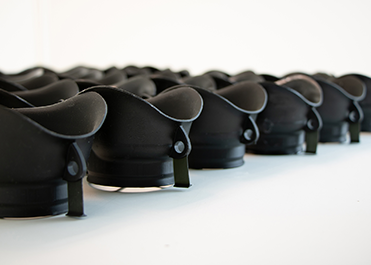Blog
Advantages of Additive Manufacturing

Written by Trenton Willson
From developing prototypes to creating replacement parts, additive manufacturing, otherwise known as 3D printing, has made huge advancements over the last several years and is playing a key role in reshoring mass production for companies in the USA. One such business is vacuum company, Dustless Technologies.
Since its inception 35 years ago, Dustless Technologies, has relied on overseas suppliers that use injection molding to produce parts for its shrouds and vacuums Although this process has served Dustless well, when confronted with supply chain issues on top of high costs, 3D printing quickly became a much better alternative for its manufacturing needs. Like Dustless, an ever-increasing number of companies in the United States that have relied on injection molding to manufacture products are jumping ship and looking to 3D printing for better alternatives.
Among the many benefits that 3D printing can offer are: rapid prototyping and testing, agility, limited up-front costs for inventory, and reshoring manufacturing. We will take a deeper look at each of these benefits below.
Four Reasons to use 3D Printing
Rapid Prototyping and Testing
Sight in 1, a company that has been working to develop a firearm scope adapter for over two years with an overseas supplier, finally approached Merit3D to see if its 3D printing model could help speed things along. Within two weeks, the product was designed, prototyped, tested, and ready for production. The scope adapter will soon be on the market with several outdoor retailers.
“When Sight in 1 came to Merit3D with its request to prototype its scope adapter, we had all the skills and technology required to meet their needs,” said Merit3D CEO Spencer Loveless. “We began the process with our design team. Within just a day or two, we had a design that was printed and tested, and within two weeks, we produced the final product. They can now order on-demand, as many parts as they need in a much shorter time frame, saving them not only time, but large inventory purchases and overseas shipping costs.”
Agility
Products change constantly, especially during the design process. With traditional manufacturing, each iteration of a design requires a new tool, mold, or dye, not to mention long periods of time to create the prototype. The agile nature of 3D printing allows design iterations and new prototypes to be made in mere hours.
Merit3D has been manufacturing Phone Skope’s product line for over a year because of these reasons. Cell phones are constantly being updated with new cameras, different sizes, shapes, and needs. Using 3D technology and computer-aided design software, minor tweaks to a product can be made in very little time, and as new phones hit the market, 3D printing is the quickest and best option for Phone Skope to get new cases produced and on retail shelves.
Mitigate Mass Production Risks
We live in a world that allows for near-instant, just-in-time production of whatever we need. Years ago, to become a published author, you had to find a publisher to print your book. Typically, you had to purchase a large number of books that were printed and stored until sold. If the book did not sell, the author was left with thousands of dollars of unsold inventory.
Manufacturing has long faced similar challenges. Purchasing large quantities of parts at a time usually made it cheaper to order and have the parts produced. This is not necessarily the case with 3D printing. Just like a book that is self-published on Amazon can be printed as a single copy, a single 3D printed part can be made and shipped to a buyer without needing to pay for more than is needed. This can save thousands of dollars in inventory management and mitigate the risk of having parts become obsolete before they are used.
Reshoring Manufacturing
For decades, many American companies have been offshoring manufacturing in order to maximize their profits. By manufacturing in countries with fewer labor and environmental regulations, companies can turn enough profit to mitigate the high cost of shipping their products across the world. However, during the Covid-19 pandemic, Americans experienced limited access to foreign imports creating huge supply chain issues and bringing to light the strategic benefits of onshore manufacturing.
The ever-improving technology of 3D printing is helping the reshoring effort. By positioning manufacturing close to the market, delivery times are reduced, products can be ordered on demand rather than in large quantities that may turn into stale inventory. More importantly, the speed at which products can be produced allows companies to respond more quickly to market changes.
Constant improvements to materials and processes in 3D printing are being developed daily. If your business is looking to save costs and keep jobs here in the US, contact us today for an evaluation of what can be produced here in our shop. Visit us at www.merit3d.com.
